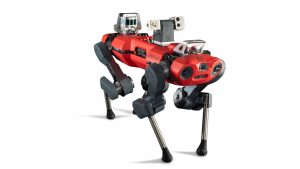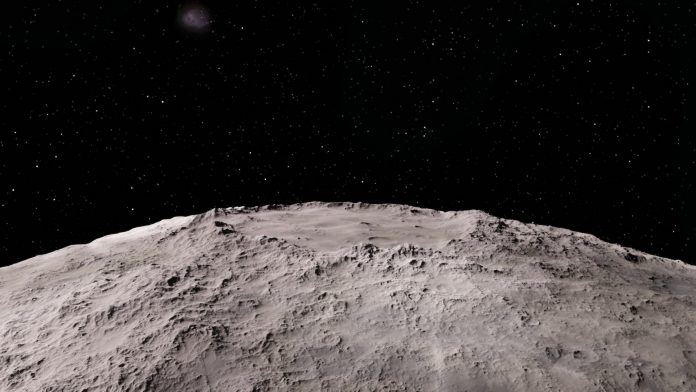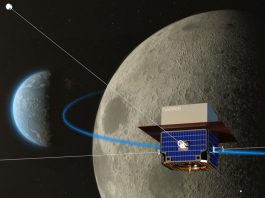A four-legged robot has been trained through Artificial Intelligence to explore the Moon’s most challenging terrains.
Artificial Intelligence has been used to train a four-legged robot to jump when on the Moon – the best way to move around its surface. The Legged Exploration of the Aristachus Plateau (LEAP), a mission concept study funded by ESA, aims to use the LEAP rover to discover the Moon’s Aristarchus plateau, an area that is currently difficult to access. The robot will allow for the geologic history of the Moon to be further explored, as it is designed to overcome the challenges faced by traditional lunar rovers.
Advantages of the LEAP rover
The concept of the LEAP rover was based on ETH Zürich’s legged robot, ANYmal. Now, ANYmal has been adapted to the lunar environment by a consortium from ETH Zurich, the Max Planck Institute for Solar System Research, OHB, the University of Münster, and the Open University.
Traditional rovers have been used for many years; however, they have various drawbacks that the newly adapted ANYmal is set to overcome.
Patrick Bambach of the Max Planck Institute for Solar System Research in Germany outlined the drawbacks of traditional rovers and explained: “Traditional rovers have enabled great discoveries on the Moon and Mars, but have limitations.
“Exploring terrain with loose soil, large boulders, or slopes over 15 degrees are particularly challenging with wheels. For example, the Mars rover, Spirit, had its mission terminated when it got stuck in sand.”
ANYmal, in contrast, can cover large distances in a short amount of time, climb steep slopes, deploy scientific instruments, and recover in the unlikely event of a fall, due to it being able to move in different walking gaits. Further to this, the robot can use its legs to further explore the Moon, by digging channels in the soil, turning over boulders or small rocks, and picking up samples.

The robot has initially been trained using a Reinforcement Learning approach in a virtual environment to replicate the lunar terrain, gravity, and dust properties. It has also been deployed in the field for an outdoor hike.
“Interestingly, ANYmal started to use a jumping-like mode of locomotion, just as the Apollo Astronauts did – realising that jumping can be more energy efficient than walking,” said Bambach.
Currently, the robot weighs less than 50kg, which includes a 10kg payload mass, capable of carrying multispectral sensors, a ground penetrating radar, mass spectrometers, gravimeters, and other instrumentation.
Aims of LEAP and future uses
The robot has the potential to explore the Moon’s most challenging terrains, as Bambach explained: “LEAP’s target is the Aristarchus plateau, a region of the Moon that is particularly rich in geologic features but highly challenging to access.
“With the robot, we can investigate key features to study the geologic history and evolution of the Moon, like the ejecta around craters, fresh impact sites, and collapsed lava tubes, where material may not have been altered by space weathering and other processes.
“LEAP’s ability to collect selected samples and bring them to a lander or ascent vehicle offers additional exciting opportunities for sample a return missions in highly challenging environments on the Moon or Mars.”
The LEAP team is aiming for the integration of the robot on ESA’s European Large Logistic Lander (EL3), scheduled to land on the Moon multiple times from the late 2020s to the early 2030s.








